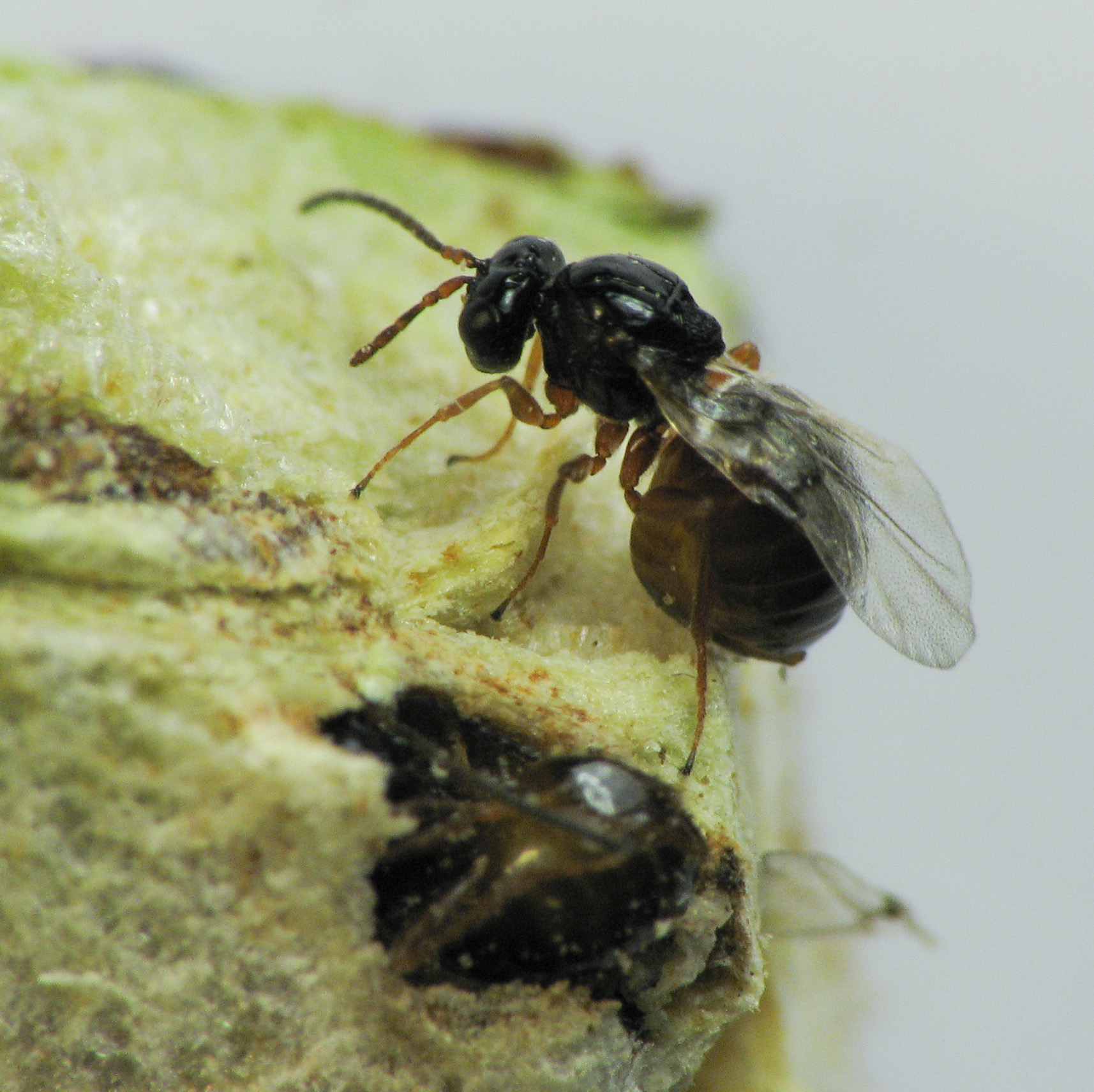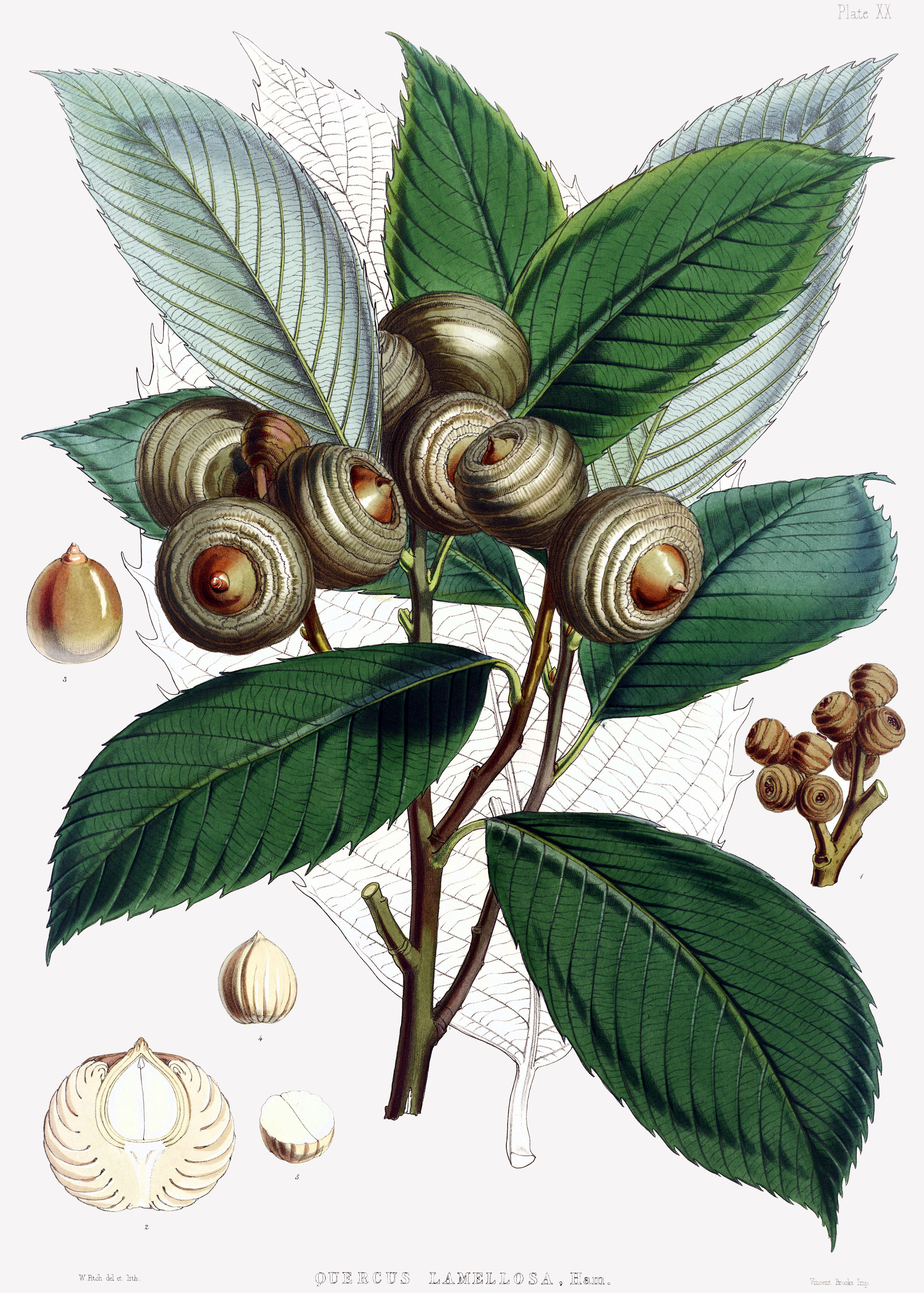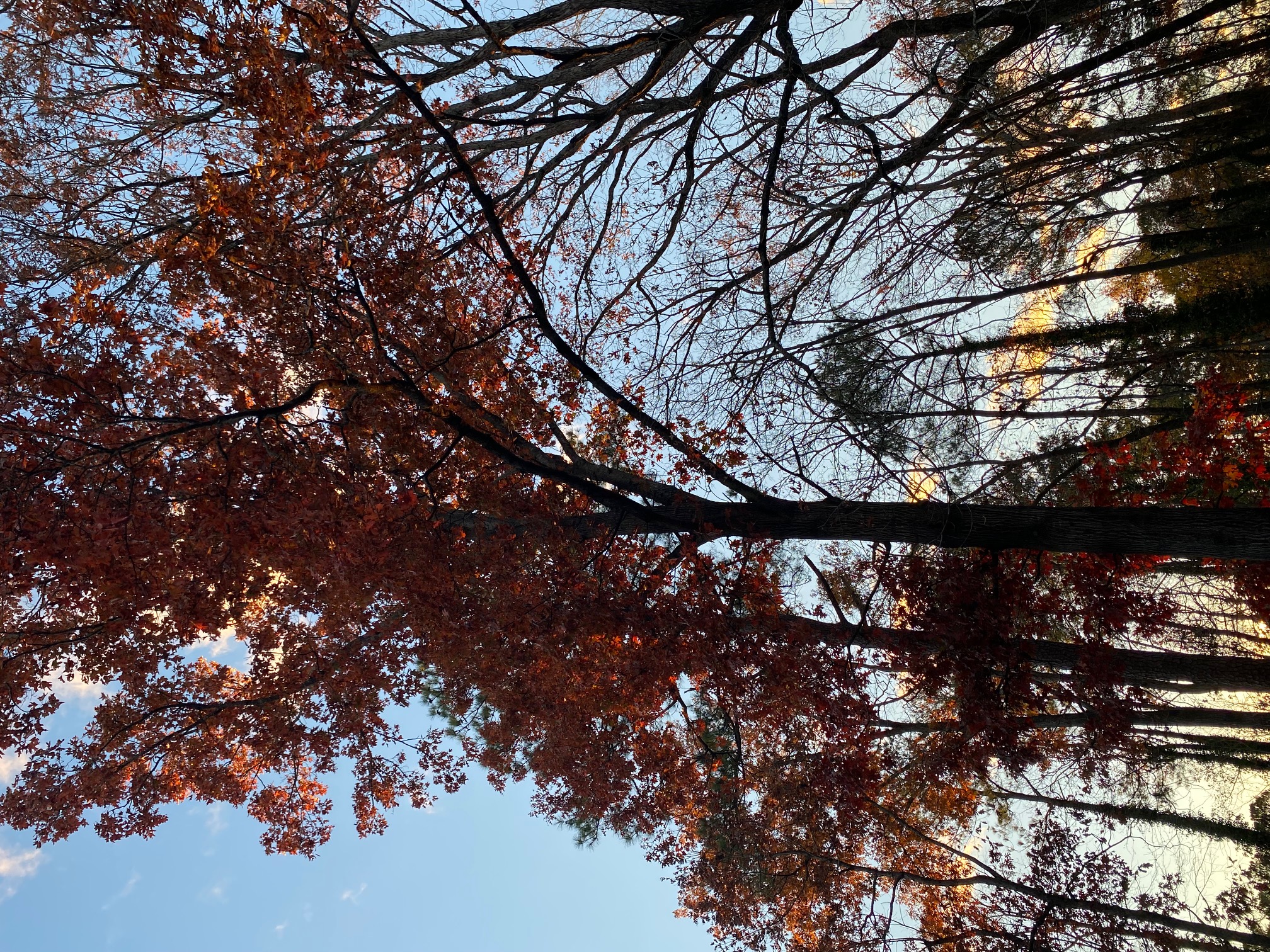|
Amphibolips Quercusinanis
''Amphibolips quercusinanis'', known generally as the larger empty oak apple wasp, is a species of gall wasp in the family Cynipidae. Ecology Range is central and eastern North America. Larvae induce galls on the leaves of host red oaks, including Quercus coccinea and Quercus rubra ''Quercus rubra'', the northern red oak, is an oak tree in the red oak group (''Quercus'' section ''Lobatae''). It is a native of North America, in the eastern and central United States and southeast and south-central Canada. It has been introdu .... Gall formation occurs on host leaf buds in the spring. Galls are apple-sized, up to 2" in diameter, with a bumpy, hairless, spotted texture. Internally, the larva resides in a central chamber with radiating white fibers called nutritive tissue which feed the larva with nutrients supplied by the host. As the gall matures its external color changes from green to brown. After the adult wasp emerges, the gall becomes brittle and "empty" when the nutri ... [...More Info...] [...Related Items...] OR: [Wikipedia] [Google] [Baidu] |
Carl Robert Osten-Sacken
Carl Robert Osten-Sacken or Carl-Robert Romanovich, Baron von der Osten-Sacken, Baron Osten Sacken (21 August 1828, – 20 May 1906) was a Russian diplomat and entomologist. He served as the Russian consul general in New York City during the American Civil War, living in the United States from 1856 to 1877. He worked on the taxonomy of flies in general and particularly of the family Tipulidae (crane flies). Early life Carl Robert Osten-Sacken was born on 21 August 1828 in St. Petersburg as the son of Baltic German Baron Reinhold Friedrich von der Osten-Sacken (1791-1864) and his wife, Elisabeth von Engelhardt (1805-1873). Biography He took an interest in insects at the age of eleven through the influence of Joseph N. Schatiloff, a Russian coleopterist. In 1849 he joined the Imperial Foreign Office and while still in Russia he published his first entomological papers, including an account of the species found in the suburbs of St. Petersburg. In 1856, he was sent to Wash ... [...More Info...] [...Related Items...] OR: [Wikipedia] [Google] [Baidu] |
Gall Wasp
Gall wasps, also incorrectly called gallflies, are hymenopterans of the family Cynipidae in the wasp superfamily Cynipoidea. Their common name comes from the galls they induce on plants for larval development. About 1,300 species of this generally very small creature (1–8 mm) are known worldwide, with about 360 species of 36 different genera in Europe and some 800 species in North America. Features Like all Apocrita, gall wasps have a distinctive body shape, the so-called wasp waist. The first abdominal tergum (the propodeum) is conjoined with the thorax, while the second abdominal segment forms a sort of shaft, the petiole. The petiole connects with the gaster, which is the functional abdomen in apocritan wasps, starting with the third abdominal segment proper. Together, the petiole and the gaster form the metasoma, while the thorax and the propodeum make up the mesosoma. The antennae are straight and consist of two or three segments. In many varieties, the backside o ... [...More Info...] [...Related Items...] OR: [Wikipedia] [Google] [Baidu] |
Cynipidae
Gall wasps, also incorrectly called gallflies, are hymenopterans of the family Cynipidae in the wasp superfamily Cynipoidea. Their common name comes from the galls they induce on plants for larval development. About 1,300 species of this generally very small creature (1–8 mm) are known worldwide, with about 360 species of 36 different genera in Europe and some 800 species in North America. Features Like all Apocrita, gall wasps have a distinctive body shape, the so-called wasp waist. The first abdominal tergum (the propodeum) is conjoined with the thorax, while the second abdominal segment forms a sort of shaft, the petiole. The petiole connects with the gaster, which is the functional abdomen in apocritan wasps, starting with the third abdominal segment proper. Together, the petiole and the gaster form the metasoma, while the thorax and the propodeum make up the mesosoma. The antennae are straight and consist of two or three segments. In many varieties, the bac ... [...More Info...] [...Related Items...] OR: [Wikipedia] [Google] [Baidu] |
North America
North America is a continent in the Northern Hemisphere and almost entirely within the Western Hemisphere. It is bordered to the north by the Arctic Ocean, to the east by the Atlantic Ocean, to the southeast by South America and the Caribbean Sea, and to the west and south by the Pacific Ocean. Because it is on the North American Plate, North American Tectonic Plate, Greenland is included as a part of North America geographically. North America covers an area of about , about 16.5% of Earth's land area and about 4.8% of its total surface. North America is the third-largest continent by area, following Asia and Africa, and the list of continents and continental subregions by population, fourth by population after Asia, Africa, and Europe. In 2013, its population was estimated at nearly 579 million people in List of sovereign states and dependent territories in North America, 23 independent states, or about 7.5% of the world's population. In Americas (terminology)#Human ge ... [...More Info...] [...Related Items...] OR: [Wikipedia] [Google] [Baidu] |
Larvae
A larva (; plural larvae ) is a distinct juvenile form many animals undergo before metamorphosis into adults. Animals with indirect development such as insects, amphibians, or cnidarians typically have a larval phase of their life cycle. The larva's appearance is generally very different from the adult form (''e.g.'' caterpillars and butterflies) including different unique structures and organs that do not occur in the adult form. Their diet may also be considerably different. Larvae are frequently adapted to different environments than adults. For example, some larvae such as tadpoles live almost exclusively in aquatic environments, but can live outside water as adult frogs. By living in a distinct environment, larvae may be given shelter from predators and reduce competition for resources with the adult population. Animals in the larval stage will consume food to fuel their transition into the adult form. In some organisms like polychaetes and barnacles, adults are ... [...More Info...] [...Related Items...] OR: [Wikipedia] [Google] [Baidu] |
Galls
Galls (from the Latin , 'oak-apple') or ''cecidia'' (from the Greek , anything gushing out) are a kind of swelling growth on the external tissues of plants, fungi, or animals. Plant galls are abnormal outgrowths of plant tissues, similar to benign tumors or warts in animals. They can be caused by various parasites, from viruses, fungi and bacteria, to other plants, insects and mites. Plant galls are often highly organized structures so that the cause of the gall can often be determined without the actual agent being identified. This applies particularly to some insect and mite plant galls. The study of plant galls is known as cecidology. In human pathology, a gall is a raised sore on the skin, usually caused by chafing or rubbing. Causes of plant galls Insects and mites Insect galls are the highly distinctive plant structures formed by some herbivorous insects as their own microhabitats. They are plant tissue which is controlled by the insect. Galls act as both the habitat ... [...More Info...] [...Related Items...] OR: [Wikipedia] [Google] [Baidu] |
Red Oaks
The genus ''Quercus'' contains about 500 species, some of which are listed here. The genus, as is the case with many large genera, is divided into subgenera and sections. Traditionally, the genus ''Quercus'' was divided into the two subgenera ''Cyclobalanopsis'', the ring-cupped oaks, and ''Quercus'', which included all the other sections. However, a comprehensive revision in 2017 identified different relationships. Now the genus is commonly divided into a subgenus ''Quercus'' and a sugenus ''Cerris'', with ''Cyclobalanopsis'' included in the latter. The sections of subgenus ''Quercus'' are mostly native to the New World, with the notable exception of the white oaks of sect. ''Quercus'' and the endemic Quercus pontica. In contrast, the sections of the subgenus ''Cerris'' are exclusively native to the Old World. Legend Species with evergreen foliage ("live oaks") are tagged '#'. Species in the genus have been recategorized between deciduous and evergreen on numerous occasions, alt ... [...More Info...] [...Related Items...] OR: [Wikipedia] [Google] [Baidu] |
Quercus Coccinea
''Quercus coccinea'', the scarlet oak, is a deciduous tree in the red oak section ''Lobatae'' of the genus ''Quercus'', in the family Fagaceae. It is primarily distributed in the central and eastern United States. It occurs on dry, sandy, usually acidic soil. It is often an important canopy species in oak–heath forests. The scarlet oak is the official tree of Washington, D.C. Description ''Quercus coccinea'' is a medium to large deciduous tree growing to around with an open, rounded crown; the maximum height is approximately . The trunk diameter at breast height is typically It is a medium-size tree that grows fast and matures relatively early. It sets a deep growing taproot. The leaves are glossy green, long and broad, with seven lobes, and deep sinuses between the lobes. Each lobe has 3–7 bristle-tipped teeth. The leaf is hairless (unlike the related pin oak (''Q. palustris''), with tufts of pale orange-brown down where the lobe veins join the central vein). The ... [...More Info...] [...Related Items...] OR: [Wikipedia] [Google] [Baidu] |
Quercus Rubra
''Quercus rubra'', the northern red oak, is an oak tree in the red oak group (''Quercus'' section ''Lobatae''). It is a native of North America, in the eastern and central United States and southeast and south-central Canada. It has been introduced to small areas in Western Europe, where it can frequently be seen cultivated in gardens and parks. It prefers good soil that is slightly acidic. Often simply called red oak, northern red oak is so named to distinguish it from southern red oak (''Q. falcata''), also known as the Spanish oak. Northern Red Oak is sometimes called champion oak. Description In many forests, this deciduous tree grows straight and tall, to , exceptionally to tall, with a trunk of up to in diameter. Open-grown trees do not get as tall, but can develop a stouter trunk, up to in diameter. It has stout branches growing at right angles to the stem, forming a narrow round-topped head. Under optimal conditions and full sun, northern red oak is fast growin ... [...More Info...] [...Related Items...] OR: [Wikipedia] [Google] [Baidu] |

.jpg)




_(27)_(17008356190).jpg)